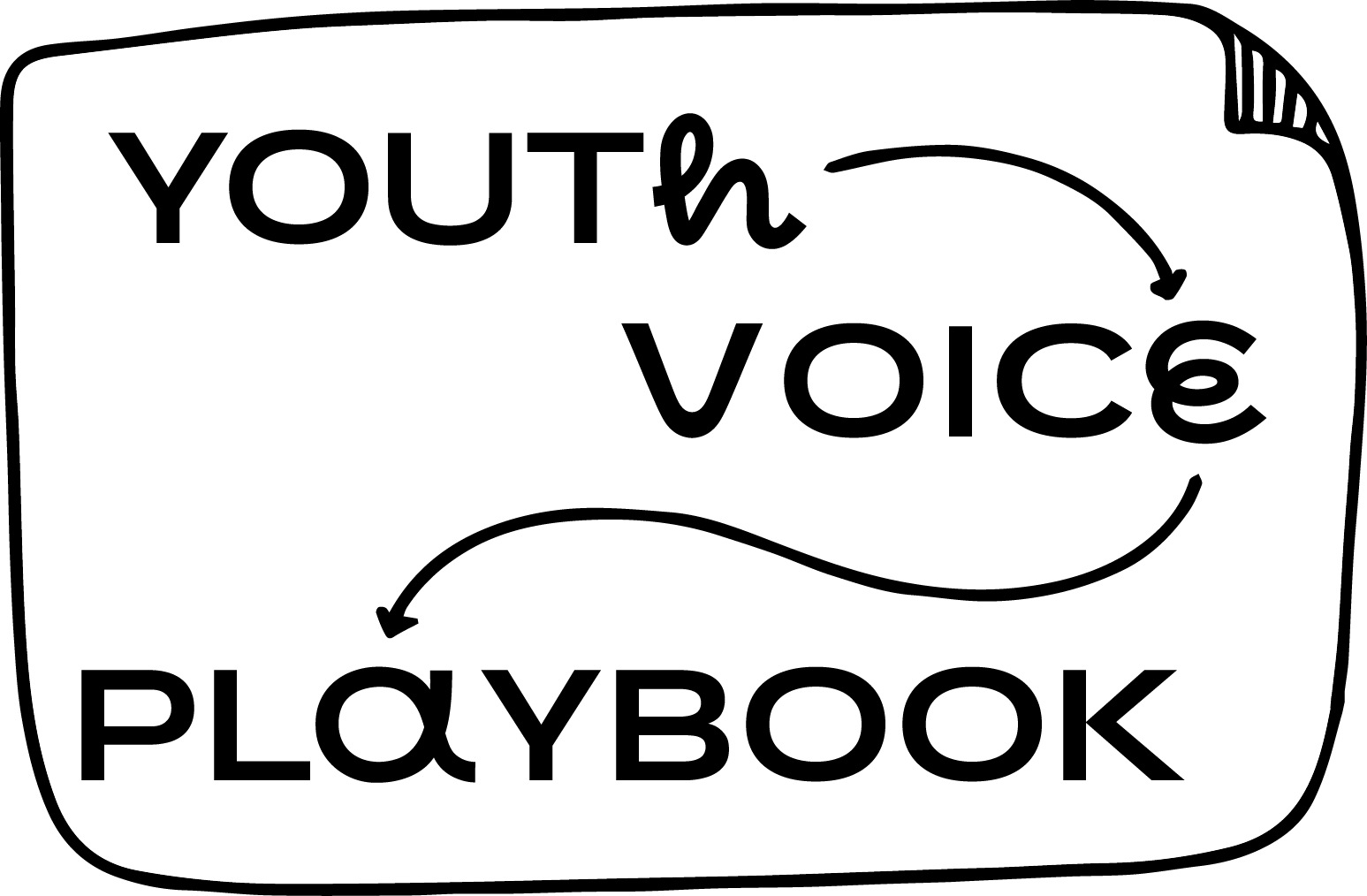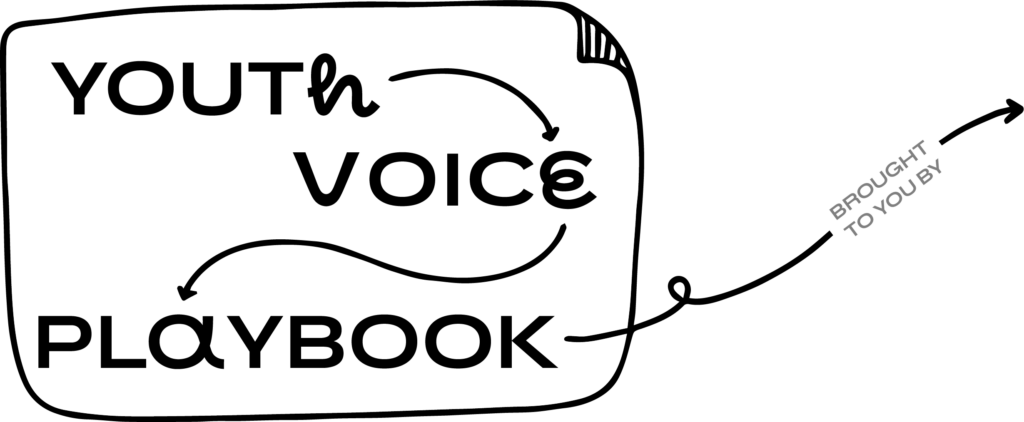Where would I even find teens…
…interested in my boring old work?
Who…
…is the best group to talk to?
Are these kids…
…actually representative of the rest of the country?
I’ve asked kids in my neighborhood…
…way too many questions about this project. I need to find someone new!
This chapter focuses on how to actually find young people and invite them to join you in your project. We will walk through how to identify the right group, discuss practical considerations for reaching teens, and explore a few important tradeoffs in recruitment and selection. By the end of this chapter, we hope you will feel confident inviting young people to join your project!
Side note: If you are just looking for some strategic, time-sensitive, youth perspective on your product, but don’t have the time and resources to actually recruit young people yourself, we hear you and we get it! Consider partnering closely with an existing organization, like In Tandem, that can help you navigate this process responsibly, ethically, and with greater ease. Partnering doesn’t absolve you of responsibility for identifying who you hope to recruit, how you’ll screen and select young people, and how you’ll talk about the opportunity. But it does make the logistics a heck of a lot easier! So check out this chapter to get a sense of those logistics, but don’t panic – you don’t have to do all of this alone.
In this chapter:
- Identify who you are trying to recruit
- Recruiting & selecting
- Choose appropriate recruitment methods.
- Communicate, communicate, communicate.
- Be thoughtful about how much you ask of interested participants.
- Keep an eye on the data throughout the recruitment window.
- Think about how and when you’re going to reach parents/guardians.
- Be clear about who you’re looking for (and who you’re not!).
- Use best practices to mitigate bias when reviewing applications.
- Don’t leave them guessing.
- Follow up with them on what to expect.
- Resources, activities, and digging deeper
Identify who you are trying to recruit
Get crisp about your ask.
You may have lots of general ideas about how to involve young people in your work, but when recruiting, it’s vital that you can make it super clear what you are asking them to do. This might look like writing a “job description,” drawing out a timeline for their involvement, or developing a series of FAQs about what’s required from youth partners. For more on figuring this out, refer back to chapter 1.
Assemble the “right” group(s).
Does your project have a particular audience? Are you trying to learn about a specific population? Consider particular demographics that may be important for your study, as well as what groups are underrepresented in the broader literature about the topic, and be clear about prioritizing those voices.
We recommend using a recruitment survey to get a better idea of what types of youth are interested in engaging with you. You may want to ask demographic questions like socioeconomic status, gender identity, race/ethnicity, school type, age, and more to get a comprehensive overview of who you will be talking to, and what perspectives they may or may not bring to the table. Make sure your survey questions allow for intersectional identities – for example, use “check all that apply” response options on demographic questions. It can be helpful to have an open-ended question (eg., “is there anything else you would like us to know about your identities/background?”) to do this well. We’ve included an example of a recruitment survey in the Resources at the end of this chapter.
It is especially important to acknowledge if participants were selected because of their membership in a shared identity group (e.g., LGBTQ+ youth, BIPOC youth, etc.). This helps to establish a shared understanding about why you may be focusing on identity-related questions or findings, without asking participants to speak as a representative of an entire identity group. It can also help build rapport and trust among the group, and give power to the identity that the group may share. We will cover more of these facilitation best practices in chapter 6.

Example from HopeLab
Hopelab and Common Sense Media’s 2024 national survey on youth social media use intentionally oversampled LGBTQ+, Black, and Latinx youth to ensure that groups that are typically underrepresented in research had greater representation in this study. Given the sample composition, Hopelab conducted several focus groups composed solely of members of these respective groups to get their perspective on how to interpret findings relevant to these identity groups. We informed youth in the advertisements for these focus groups that we were seeking members of specific identity groups (e.g. LGBTQ+ youth) to talk about findings pertaining to their identity group. During the focus groups, we emphasized that participants are not responsible for being a representative of the entire group, nor did we consider them a monolith, but we were interested in exploring how our findings resonated with their own personal experiences. We also tried, when possible, to find a moderator who shares the aspect of identity we were speaking about in those groups. We found that this process helped to establish a shared understanding about why we were focusing on identity-related questions, and built trust and openness about discussing matters relating to identity.
Consider how many youth you’d like to join you.
Think about both the total number of voices and perspectives you want in your project, but also how many young people you want to engage at a time. If you are planning a one-time engagement, you will have to choose the format carefully; if you are planning to work with the same group of youth advisors over a longer period, you may be able to choose multiple formats.
Decide whether or not geography matters.
Depending on the nature of your project, it might be appropriate to find a super context-specific group of young people from the same school or city. In other cases, it might be better to have a more diverse group of youth that are more geographically diverse. Gathering young people who won’t see each other in other contexts can help lower the “stakes” of participation, but also means they don’t have shared context to build on. There’s no right or wrong choice here; it depends on what you want to learn!
Recruiting & selecting
Now it is time to actually find some teens! In this section we’ll cover methods for inviting young people to join you.
Choose appropriate recruitment methods.
There are a number of ways to go about this. One common method is through utilizing already existing ecosystems like schools, after-school clubs, or other youth-serving organizations, and asking them to share your recruitment materials. Online recruitment via social media is also a useful technique; some examples of this are in the Resources section for this chapter. There are also organizations that exist, like In Tandem, DScout, or the RAND American Youth Panel, specifically to streamline youth recruitment (as well as consent, assent, youth protection, payment, logistics, and more). Outsourcing recruitment to an organization like this can help cast a wide net to a diverse group of young people, while also offsetting the logistical challenges we covered in chapter 2 and chapter 3.

Example from Center for Digital Thriving
In our recent work on a national survey in collaboration with Common Sense Media, we wanted to involve youth in co-interpreting findings. We developed a plan to meet with multiple groups, doing three 90-minute co-interpretation sessions per group. Based on some of the initial findings from the survey, we were particularly invested in elevating the voices of BIPOC teens, teen girls, teen boys, and LGBTQ+ teens through focused affinity groups. Initially, we received IRB approval to recruit youth from our networks, and through those networks we invited youth for a BIPOC group and a girls group. However, we also wanted to be intentional about including LGBTQ+ teens and teen boys so they could help interpret findings pertaining to their respective identities. We went back to our IRB to request a modification so that we could work with Character Lab to involve additional groups of teens through their CLIP program. Once we had approval, Character Lab swiftly helped us connect with teens and handled the logistics of recruiting and scheduling. The CLIPsters were experienced at discussing research findings (including unpacking survey design and methods), which helped us facilitate our sessions efficiently and engage in a meaningful dialogue.
Communicate, communicate, communicate.
There are a lot of details you need to share with young people who are applying to join your program or study. Make sure you communicate as much as you can up front, in multiple formats, and in easy-to-access places. Some useful details to include:
- How to apply or indicate interest in participating
- When the application or recruitment survey is due
- How long it will take to hear back
- Who to reach out to if they have questions
- What your selection criteria are (and are not)
- How long the application or recruitment survey will take to fill out & what it entails
Be thoughtful about how much you ask of interested participants.
We have found that asking students to put a little bit of thought into why they want to participate in this opportunity helps to make sure they truly are interested. An application or recruitment survey also is a really good way to collect some of the demographic information that can help you ensure you’re reaching the right population and/or assembling a group that meets your recruitment aims. However, try to keep the time burden to 15 minutes or less, and be sure you provide lots of options to help lighten the load: e.g. give students a choice between typing an answer or recording a video or audio response. Nobody likes filling out a long application (and you won’t like reviewing long applications either)! Also, many teens fill out applications on their phones, which makes typing long responses difficult. If you have a simple recruitment survey and don’t need much information for your project, shoot for easy-to-answer questions and a total duration of 5 minutes max.
Keep an eye on the data throughout the recruitment window.
It’s important to be tracking the number of interested participants you have and whether the populations you really are hoping to have represented are applying. It’s much easier to course correct this earlier in the window than it is to realize on the day the application closes that you don’t have any participants of a certain population represented. If you are noticing trends in the data of who is and is not signing up, it can inform a change in your promotional tactics to try and find a more balanced pool of young people.
Think about how and when you’re going to reach parents/guardians.
If you need parental consent, you’ll want to think ahead of time about when you involve them in the process. You don’t want young people to complete a whole application and selection process, only to find out the night before your meeting that their parent says they can’t join your project. However, you also don’t want to give parents more power than the youth themselves in deciding whether to participate in your work. To thread this needle, we recommend having a section of your recruitment materials that is parent-facing, and recommend that young people show it to their parents early in the process. For example, you can use a very short (3 minute) recruitment survey to let youth express their interest, and then follow up with more information about the project directly with those youth and their parents/guardians.
Additionally, be cautious about how you ensure that you aren’t creating challenges for young people by exposing information they’re not ready to share. For example, if you have youth tell you that their legal name and their preferred name differ, or their pronouns differ from the pronouns of the gender assigned at birth, be sure you ask what name or pronouns they would like you to use around their parents. Treat this information very carefully so as to avoid forcing them to have a conversation they have not chosen to have yet.

Example from Character Lab
For students under 18, we require parental consent for participation in CLIP. We collect this through an electronic signature using Docusign. In order to ensure this email request won’t be a surprise, we ask the youth to answer a few questions in the application form about their parents, before they’re even accepted into the program. This includes questions such as the following:
- Have you talked to your parent/guardian about CLIP?
- What is your legal name? What is your preferred name? Which name would you like us to use with your parent/guardian?
- If you are accepted to CLIP, we will need your parent/guardian to sign a permission form agreeing that you can participate. Will this be a problem?
- The permission form is in English, but we can translate it into other languages. Would it be easier for your parent/guardian to read it in another language? If so, what language?
- What is your parent/guardian’s email address? (We won’t email them without letting you know first!)
- This upfront clarity and expectation-setting has helped us create a supportive environment and meet the needs of all students without making any students feel like they have to ask for special support. We’ve gotten good feedback over the years about how this helped students feel seen and welcomed in CLIP.
Be clear about who you’re looking for (and who you’re not!).
This is a tricky one to do well, but we find it’s really important, particularly for students who might not consider themselves high performers. There’s a lot of research about how clarity around how you’ll be assessed contributes to self-efficacy and motivation (e.g. Van Dinther, Dochy, & Segers, 2014). There’s also a lot of research about how people self-censor (e.g. don’t mention that they are multilingual, etc.) when they worry that certain parts of their identity or personality might harm their chances of selection. Be clear that you are looking for people who are interested in the project and who represent diverse perspectives, and that there are no right or wrong answers to your sign-up form. This can help build confidence to apply among young people who might otherwise hesitate – especially for something as intimidating sounding as a research project sponsored by a university!
Use best practices to mitigate bias when reviewing applications.
If you have more young people expressing interest than you can include in your project, you’ll need some sort of way to select who actually joins you. This application review process can be really prone to individual bias if not done carefully. To mitigate bias, we recommend having a clear and concrete rubric for scoring, redacting application materials to remove names and other identifiable information, and doing some sort of training or reflection on implicit bias before review begins. If resources allow, we also recommend that you have multiple eyes on each application and that reviewers sync up on a few practice applications before they begin scoring to ensure that people are using the same measuring stick. For more on this, see the Resources section at the end of this chapter.
Don’t leave them guessing.
In situations when you can’t have every young person who expressed interest actually join your project, don’t ghost them. Everybody deserves the courtesy of hearing whether or not they were selected to participate. It’s nice if this can be direct (e.g. an email saying “we didn’t select you to participate but we’re glad you applied!”) but if that’s not feasible, at least make sure you state clearly when the application will close and that people who are selected to participate will hear back by a certain date. This way the young people know that if they don’t hear back after that date, their application didn’t just fall into a void!
Follow up with them on what to expect.
After your group of youth is assembled, send a calendar invite or message with relevant information like Zoom link, physical meeting room, and any pre-work that might be required (e.g. reading a document or testing out a tool). We recommend following up 2 days before the session and again 2 hours before the session to make sure everyone joins on time. Keep in mind, if you are using text to communicate with young people, we recommend having at least 2 trained adults from your team on any text thread.
Resources, activities, and digging deeper

Reflection & planning guide
This worksheet (also shared in chapter 1), which was adapted from resources by Ahna Suleiman, can be used for personal reflection or leading a group conversation with your team as you’re. young people for the first time in a new project.

Recruitment survey
This example from the Center for Digital Thriving shows a short, low-lift example of how you can solicit basic demographic information from participants that will help you learn about the composition of your youth group.

Qualitative study about recruitment and retention
This article shares some evidence and recommendations for youth recruitment and participation in research.

Online social media recruitment
This resource shares a great overview of how to do this well.

Minimizing bias in application review
This blog from a teacher fellowship program addresses some of their lessons learned and best practices. There are lots of other great resources online too!

(See Link Below)
Age gate / identity verification resources
Sometimes you may be required to verify a young person or their parent’s age or identity. This is tricky and can feel invasive. Character Lab worked with PRIVO to do this, but there are likely other great companies out there too!
What to Read Next
You have young people signed up who want to join you, or at least a plan for how you’re going to find them! This is a moment for celebration!!! Things are starting to get real, and you’re about to get into the really fun, rewarding, and interesting part where you get to hear from these youth partners about their perspectives. It’s time to figure out how you’re going to structure your time together to maximize what you can learn from them – turn to chapter 5 to get started!




























